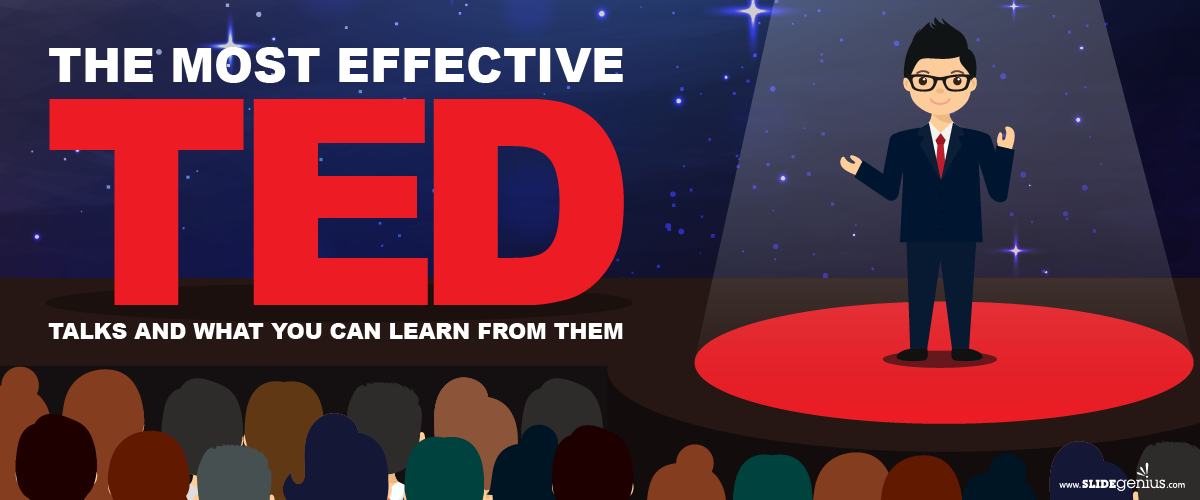
TED Talks have become a gold standard for engaging, impactful presentations. The best TED Talks captivate audiences by blending storytelling, emotion, and a clear message into a concise, compelling format. Whether you’re preparing for a presentation or aiming to improve your public speaking skills, studying the most effective TED Talks offers valuable insights into what makes them so powerful.
Here are key lessons you can learn from the most successful TED Talks:
1. Clear and Focused Message
One common thread among the most successful TED Talks is a clear and focused message. These speakers avoid overloading their audience with information and instead distill their core message into one clear idea that resonates.
Why It Works:
- Memorability: Audiences are more likely to remember a single, well-communicated idea rather than multiple points crammed into a short presentation.
- Easy to Follow: A focused message makes the talk easier to follow and understand, even if the subject matter is complex.
Example: In Simon Sinek’s famous TED Talk, “Start with Why,” he simplifies his core message into one principle: successful leaders inspire action by starting with their purpose (the “why”) rather than their product (the “what”).
Takeaway: When preparing your presentation, focus on one main idea. All your content should support and reinforce this key point.
2. Engaging Storytelling
TED speakers often use storytelling to illustrate their points, making abstract concepts relatable and memorable. Stories humanize the speaker and help create an emotional connection with the audience.
Why It Works:
- Emotional Engagement: Stories tap into the audience’s emotions, making the presentation more impactful.
- Relatability: Personal anecdotes or real-world examples allow the audience to connect with the material on a deeper level.
Example: Brené Brown’s TED Talk on vulnerability incorporates personal stories about her own struggles with vulnerability, making the topic more accessible and relatable.
Takeaway: Weave stories into your presentation. Whether they are personal experiences, case studies, or examples, stories make your message stick.
3. Passionate Delivery
The most effective TED speakers are not just knowledgeable—they are passionate about their topic. Their enthusiasm is contagious, energizing the audience and keeping them engaged throughout the talk.
Why It Works:
- Authenticity: Passionate delivery feels authentic and convincing. When the speaker believes in their message, the audience is more likely to be inspired.
- Energy: A passionate tone elevates the energy of the room, keeping listeners attentive and emotionally invested.
Example: In Ken Robinson’s TED Talk, “Do Schools Kill Creativity?”, his enthusiasm for creative education is evident, making his message not only educational but also deeply persuasive.
Takeaway: Show your passion for the subject. Let your enthusiasm come through naturally in your tone, facial expressions, and body language.
4. Simplicity in Visuals
The most impactful TED Talks use minimalist slides that emphasize clarity. These slides serve as visual aids, not distractions, and are designed to reinforce the speaker’s points rather than overwhelm the audience with information.
Why It Works:
- Less is More: Simple visuals ensure that the audience focuses on the speaker rather than being distracted by overly complex slides.
- Reinforces Key Points: Minimalist slides with key words, simple images, or data visualization can help clarify complex ideas without detracting from the speaker’s message.
Example: Bill Gates’ TED Talk on energy innovation features clean, simple slides with graphs and charts that complement his explanations without overwhelming the audience.
Takeaway: Keep your slides simple and to the point. Use images, diagrams, or brief text that enhances your talk rather than detracts from it.
5. A Powerful Opening and Closing
TED speakers understand the importance of a strong opening and closing. A compelling opening grabs the audience’s attention right away, while a memorable closing leaves a lasting impression.
Why It Works:
- First Impressions Matter: An intriguing opening (whether it’s a bold statement, question, or story) sets the tone for the rest of the talk and hooks the audience.
- Call to Action: A strong closing often includes a call to action or a thought-provoking statement that encourages the audience to reflect on the message after the presentation.
Example: Amy Cuddy’s TED Talk, “Your Body Language Shapes Who You Are,” starts with an engaging story and ends with a memorable call to action, encouraging viewers to apply her body language tips to improve their confidence.
Takeaway: Craft an attention-grabbing opening and a powerful closing that reinforces your message. Consider ending with a call to action or a key takeaway that lingers with the audience.
6. Using Humor to Engage
Humor can be a powerful tool in presentations, breaking the ice and keeping the audience engaged. Many TED speakers use light humor to build rapport with the audience, making their talk more enjoyable and relatable.
Why It Works:
- Relaxes the Audience: Humor can help ease tension and make the audience feel more comfortable.
- Makes the Speaker More Relatable: A well-placed joke or light-hearted comment makes the speaker more approachable and human.
Example: Sir Ken Robinson’s talk is filled with witty remarks, which helps make his discussion on education reform feel less formal and more accessible.
Takeaway: Use humor appropriately in your presentation to keep your audience engaged, but make sure it aligns with your message and tone.
Final Thoughts
The most effective TED Talks succeed because they master the art of clear messaging, engaging storytelling, and passionate delivery. By incorporating these techniques into your presentations, you can create a powerful and memorable experience for your audience. Whether you’re speaking to a small team or a large conference, these lessons will help you elevate your public speaking and presentation skills to TED-level effectiveness.